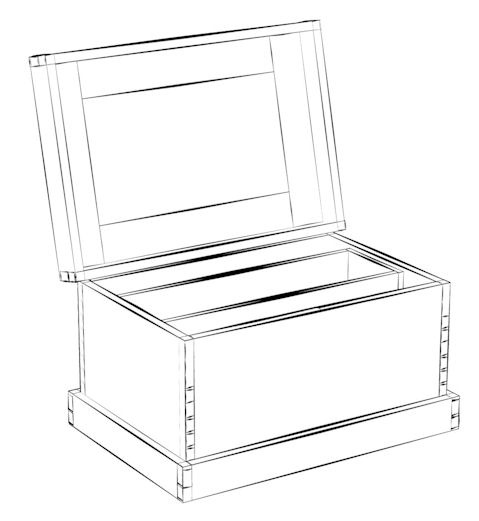
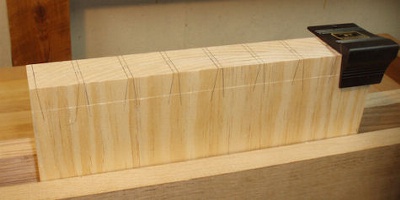
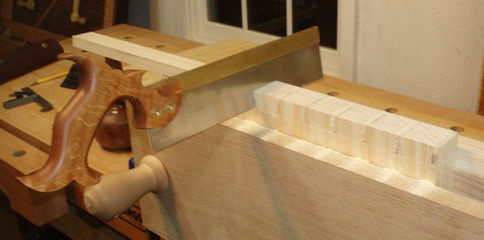
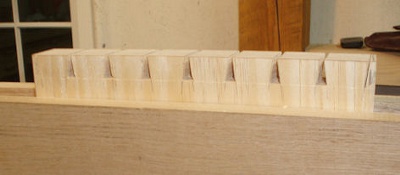
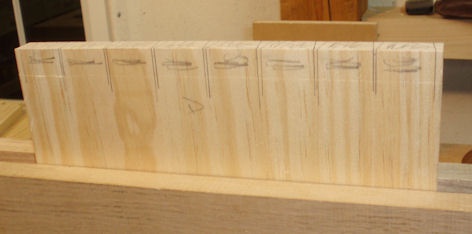
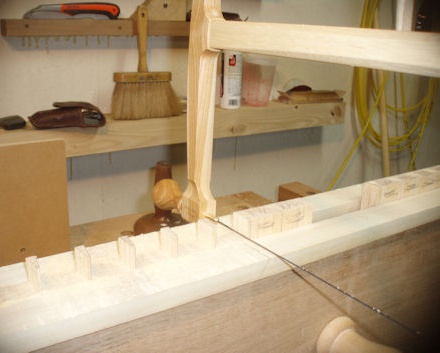
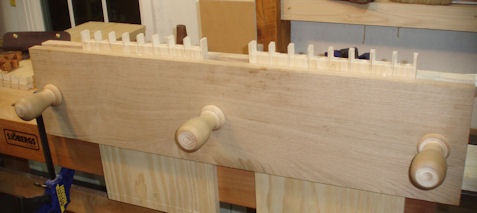
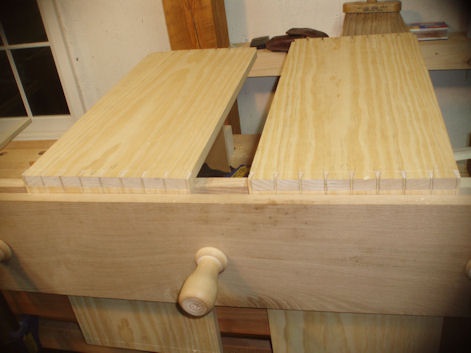
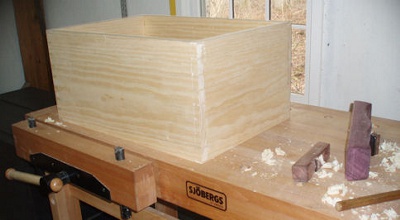
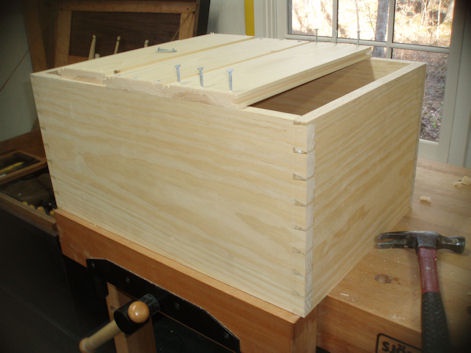
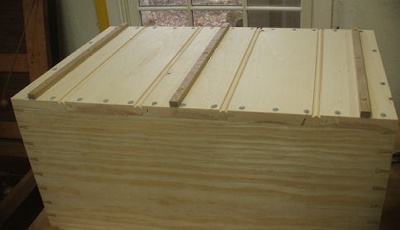
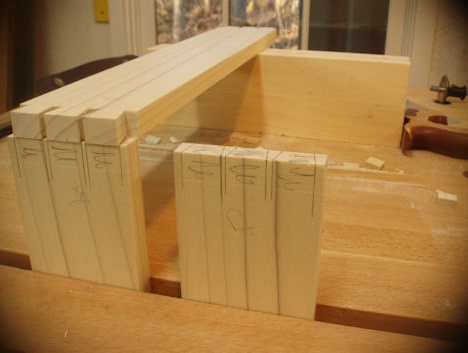
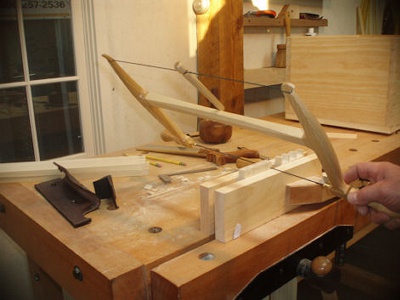
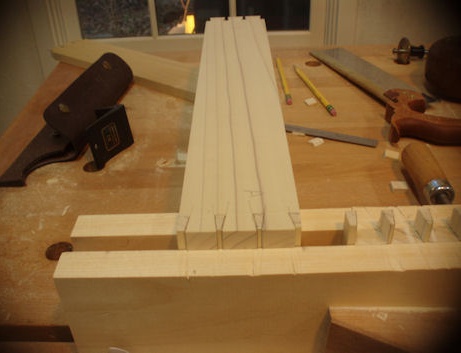
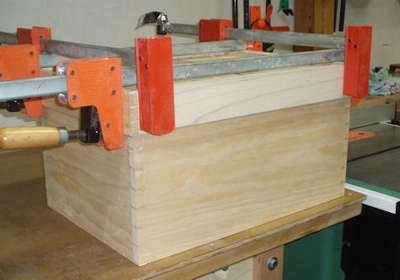
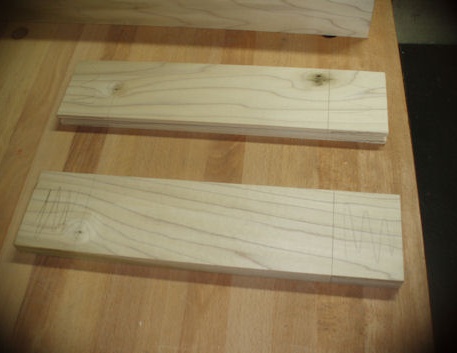
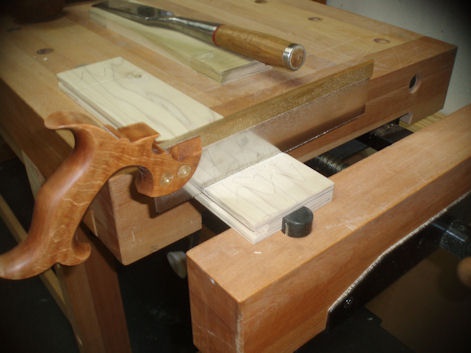
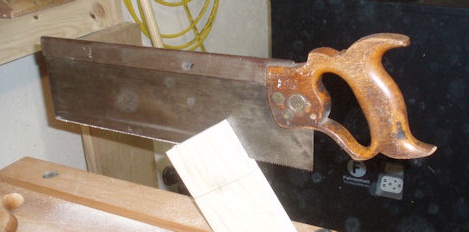
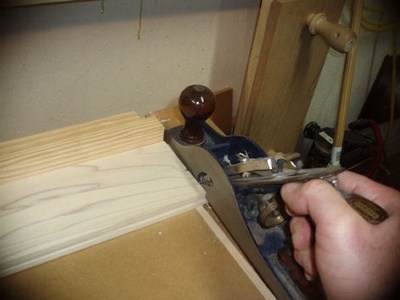
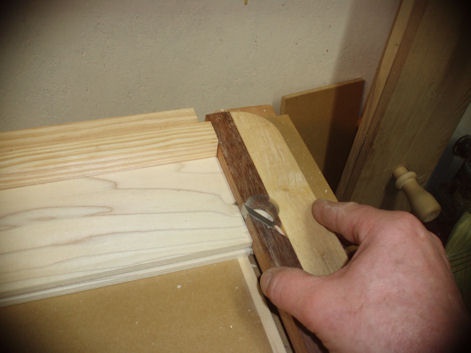
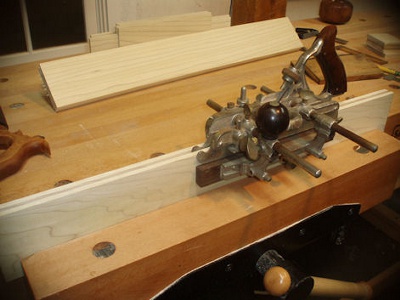
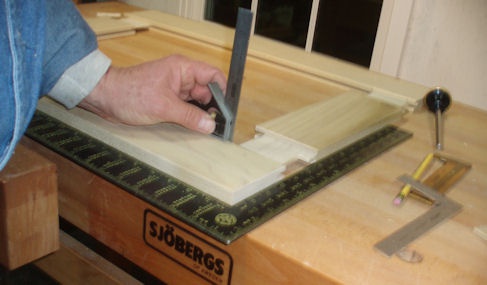
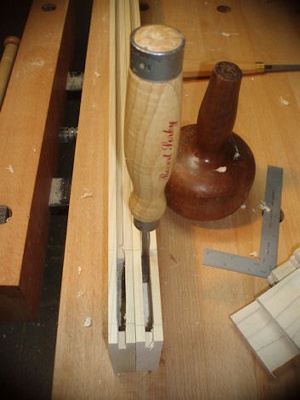
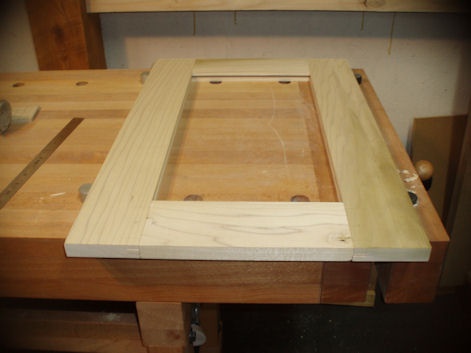
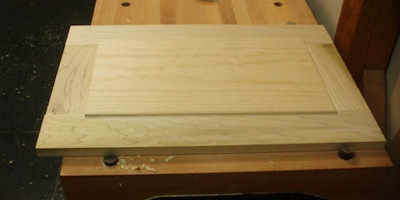
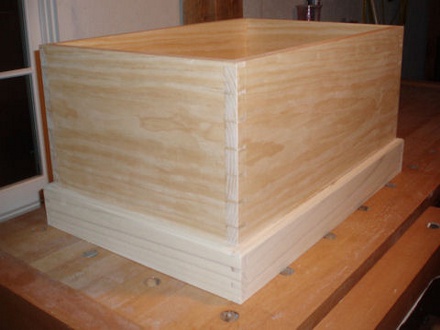
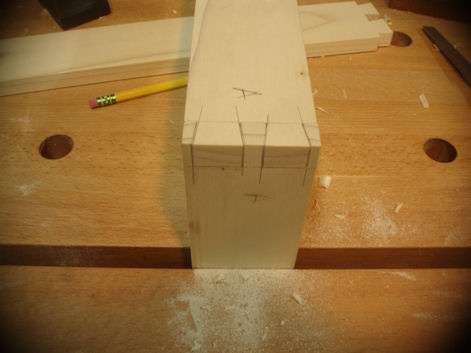
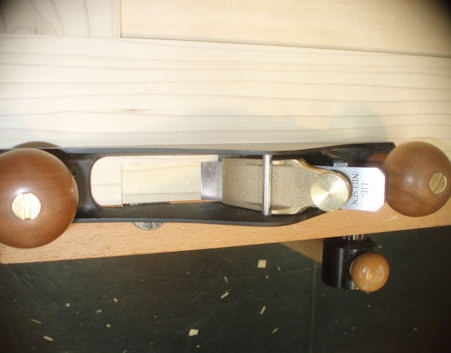
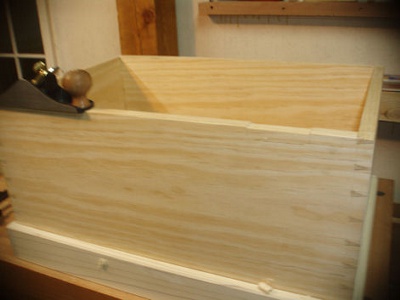
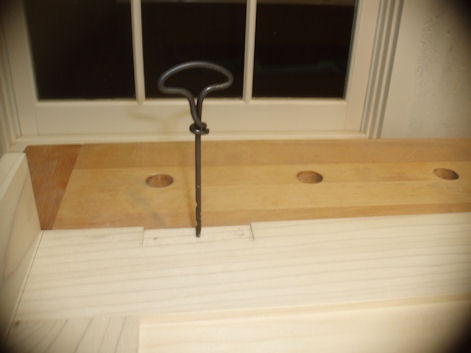
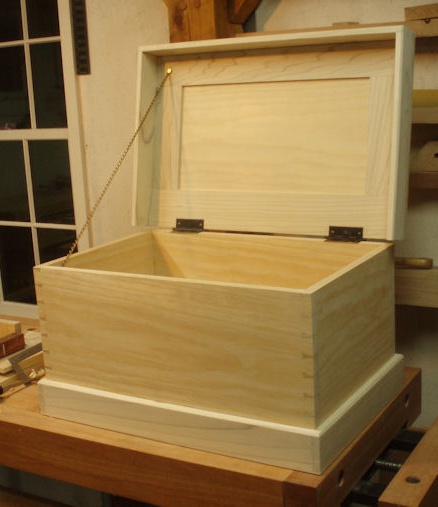
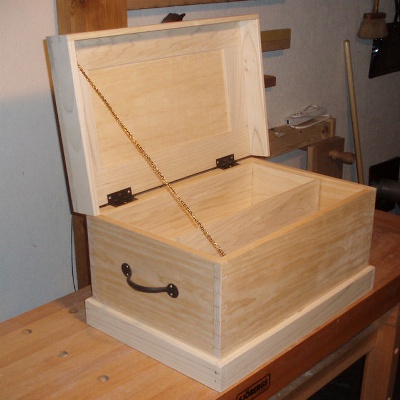
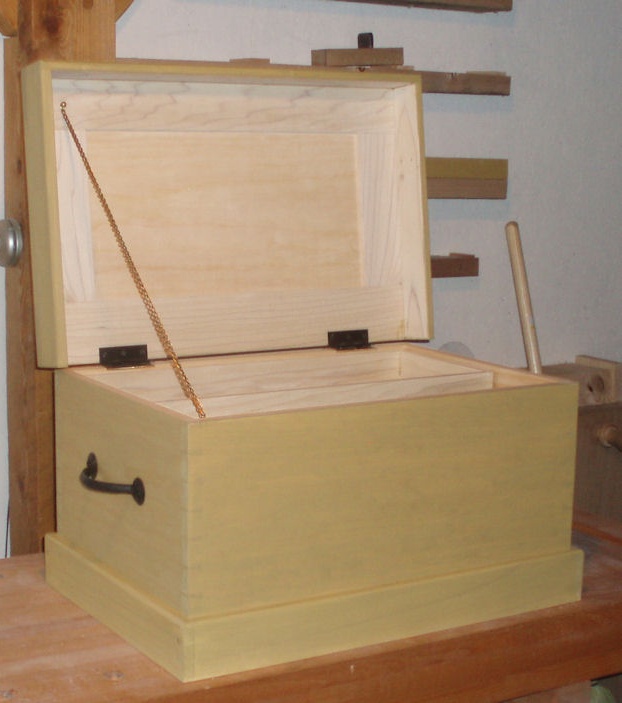
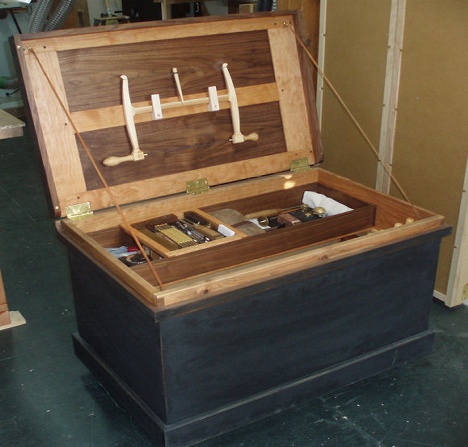
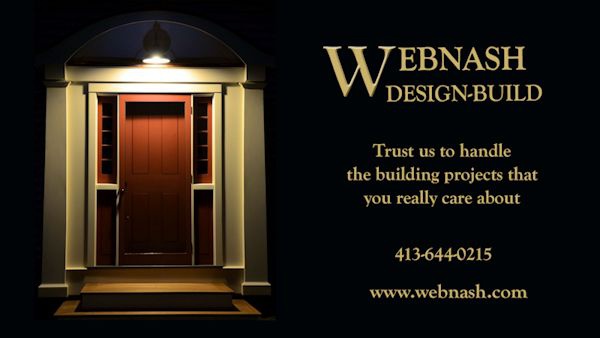
Basic Traditional Toolchest
approx. 26" long, by 17" deep, by 14" high
Following is a step by step pictoral outline of the toolchest that the Heartwood
class will build. It is traditionally proportioned to be a good size to carry to a
jobsite.
The main carcase pieces are cut to size and
dovetails are laid out. I lay out tails first
and pins second.
Tails are cut with a dovetail saw.
Tails are "wasted" with a turning saw.
Pins layed out from tails.
Wasting pins with a turning saw.
Pins cut out. I use a "Moxon" vise to cut
dovetails in. It brings the joints up to a
good height for layout and cutting and
holds boards securely for working on
their ends.
Dry fitting the carcase sides.
Planing the corners off after gluing. I use
"Krenov" style hand planes which I build.
Nailing bottom boards on.
Oak runners on underside of chest.
Cutting dovetails in the plinth.
Wasting pins with a turning saw.
Dry fitting plinth.
Glueing plinth together and to carcase.
Laying out boards for frame and panel lid.
Cutting tenon shoulders.
Cutting tenon cheeks with a tenon saw.
Adjusting tenon thickness
with a rabbit plane.
Adjusting shoulder with
a shoulder plane.
Ploughing dadoe for panel
with a Stanley 45.
Laying out mortise.
Cutting mortises.
Dry fitting frame.
Frame and panel.
Carcase with plinth.
Constructing dust apron which
will be attached to frame and
panel lid.
Using butt mortise plane to make hinge mortises.
Cutting hinge mortises in carcase.
Using gimlet to drill screw holes.
Assembled chest and chest with sliding tray added.
Add a coat of mustard colored
stain to the exterior and this one
is complete. This is a very
pleasant project that took me
approximately 18 hours. The
carcase, bottom, and lid panel are
eastern white pine, and the
plinth, lid frame, and tray are
poplar. The material was
dimensioned with power tools
(band saw, jointer, planer, table
saw), which took about an hour.
All of the joinery, planing,
sawing, finishing, etc. was done
with hand tools. I spend the bulk
of my time working with hand
tools because I find them
peaceful and quiet, and for
relatively small jobs I believe
that I am faster and more
accurate working with them than
I would be with power tools.
This is the full size chest that I keep
most of my hand tools in. It's
constructed from cherry and black
walnut and has castors to move it from
place to place. It stays in my shop.
You can sign up for a 5 day class to
build a tool chest in western, MA in
Sept. 2012 at Heartwood School.
Project Blog
Spring 2012 Update
Jan 2012 Update
Autumn 2011 Update
July 2011 Summer Update
April 2011 Barn Update
February 2011 Barn Update
January 2011 Barn Update
Dec 2010 Update - Barn and Fireplace
Oct 2010 Update
Sept 2010 Update
Aug Update and Knee Braces
Scarf joint and barn update
Small Timber Framed Building
Fishing Cabin
Screen Porch
Stair Modelling
Container Based Structures
Off the Grid Timber Frame
How Green is Timber Framing?
Trim Detail, Geometric Proportion, and Realistic Modelling
Geometric Design Primer part 1
Geometric Design Part 2
Building Structures and Envelopes
Cabot Shores Cottage
April 2010 Update
May 2010 my own Barn
June 2010 Update
July 2010 Update
Spring 2012 Update
Jan 2012 Update
Autumn 2011 Update
July 2011 Summer Update
April 2011 Barn Update
February 2011 Barn Update
January 2011 Barn Update
Dec 2010 Update - Barn and Fireplace
Oct 2010 Update
Sept 2010 Update
Aug Update and Knee Braces
Scarf joint and barn update
Small Timber Framed Building
Fishing Cabin
Screen Porch
Stair Modelling
Container Based Structures
Off the Grid Timber Frame
How Green is Timber Framing?
Trim Detail, Geometric Proportion, and Realistic Modelling
Geometric Design Primer part 1
Geometric Design Part 2
Building Structures and Envelopes
Cabot Shores Cottage
April 2010 Update
May 2010 my own Barn
June 2010 Update
July 2010 Update
HOME -GALLERY - PROJECT BLOG - PHILOSOPHY - REVIEWS - TOOLCHEST - WINDSOR CHAIR - EMAIL